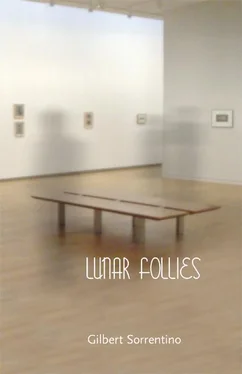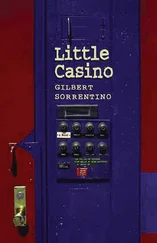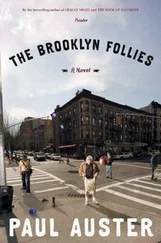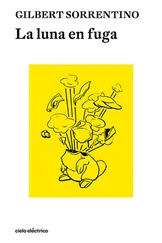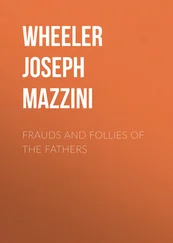Art from the Transcontinental Traveling AIDS Project
A Film
Black night, black rain falling outside the windows of a brightly lighted room, within which a meeting has come to a barely discernible order. “A meeting about what?” A man, obviously a real-estate agent by the look of his too-expensive tie and shoes, not to mention the Mont Blanc pen in his shirt pocket, rises to address the people in attendance, who shout at him despite a pinched-face, cadaverous woman’s call for order and decorum for God’s sake. What is her name? And what gruesome diet has she embraced to make her resemble a handful of broken straws, to make her legs so pitifully thin that her stockings bag and wrinkle at knees and ankles? The Auschwitz diet? And what is the real-estate agent’s name? “I don’t understand this part of the picture, especially the fat man who has appeared in the doorway on the right?” The starved woman looks at the fat man, not understanding his presence in the doorway. Has not this door always been closed? “Are these horrible people supposed to be tenants?” The real-estate agent has removed his tie and shoes, and plans, or so it would seem, to speak. The tenants rise and begin to dance. “Did they dance like that back in the old days?” What old days? There is a sign on the wall (seen for the first time) that notes, in large black letters, NO VACANCIES. Where is it stated, in what contract or its bylaws, that such signs are even permitted in impromptu meetings such as this one? “Stated?” Black night now enters the room at last, preceded by black rain and the usual bitter cold. “Ain’t California, man.” The tenants have left. The real-estate agent gives his skeletal assistant a kiss as she reads from a book of mediocre feminist poems, Purple Gentian. “Who is the author of this lousy book?” Fake soldiers in Class B khakis enter the room, their brass dull and smudged, their patches and chevrons sewn on crookedly, their shoes scuffed and spotted with what looks to be dried vomit and Christ only knows what else. “These guys are soldiers? ” They stand out starkly against the black night, starkly and a little artily. The room is, let us be clear about it, a freight elevator, in which the skinny woman, her lips swollen with sexual excitement, gazes at her boss, who is now a different man altogether, one who pretends that his name is not Arthur, the name that his amorous assistant calls him by. “Is this guy the same guy as the guy before with the tie?” Thus the indispensable magic of cutting-edge cinema, so they buzz, buzz and trumpet. “Buzz and — wotthefuck? — trumpet?” The elevator stops at the sub-sub-basement and the doors open onto an echoing and dimly lighted parking garage. NO VACANCIES trumpets the sign on the wall, a sign that may well have been transported from an earlier place, or scene. And yet, the garage, echoing and dim, is virtually empty of automobiles, another mysterious image, or at least symbol. “For like, life?”The tenants, however, have all gathered here, and they are once again shouting at Arthur in a language that is not comprehensible, even though it is clear that Arthur and his flushed assistant, who has quite shamelessly removed most of her clothing, not only understand it, but are repelled by it. The fat man, it is now apparent, is the tenants’ leader, although he pretends to be raptly studying a diagram of the sub-sub-basement, whose only legible words, at this distance, read: You Are Here. “Is that the name of the movie?” The real-estate agent is speaking quietly to his gal Friday, whom the fat man is ogling. “Maybe she’s the real-estate guy’s wife.” Wife or no, Arthur seems to think that she is some dish, as does the fat man, bony though she may be. “It’s always the way.” the parking garage is now filled with cars, and the NO VACANCIES sign at last makes sense, even though there may well be some vacancies. At least the shiny machines look like cars, but you never know, you never know. In any event, they are not, as Arthur’s eager enamorata attests, art! Despite the stares of the tenants and the fat man, she is, as the phrase has it, all over Arthur, and dizzy with lust. How she’d rather be in her favorite Village “pub,” sitting across from Arthur, their eyes locked above their tomato martinis, speaking of art and life and love, and, well, serious things in general. Love, sizzling love, would follow, in due course. “Is this, I mean this whole thing like, art?” Black night absorbs the entire shebang.
The garden exhibition that opened at the T. C. Andrews galleries on Saturday arrives here from Los Angeles and Houston, and it is well worth waiting for. Occupying the South Patio and Mower Gardens of the ground-floor gallery, it is a delight to the eye. Glossy-black Orient dew, surrounded by a pale-golden halo of rare, Sacred dew, suggests the moon’s bosom, bared, all unashamedly, to avid blowing roses of variegated colors and lush, foreign-bred, purple flowers. Sweet leaves and green blossoms inform a grassy slope, brilliant under lights especially designed for this exhibition by Garden Glows of London and Manchester. It is as if the gallery has been given over to an eternal spring, one which enamels all its contiguous elements, one which, in effect, “enamels everything,” as someone, with a gesture toward elegant panache, once remarked. There are also in attendance, so to speak, bright oranges in at least a dozen varieties, gleaming like so many golden lamps in the subtle yet spectacular lighting, a magical illumination that, in this breathtaking corner of the garden, creates what seems an uncanny green night. Figs, real or made of the most exquisitely fragile Baccarat crystal, seem to be at our mouths everywhere, as we move through the gorgeous displays; and melons — golden, orange, mauve, cerise, azure, brilliant yellow — crowd together at our feet in profligate and splendid profusion. Apples, cedars, the huge pomegranates called “Chinese honeymoons,” each bursting with jewels, awaken a kind of vegetable love in the viewer, and cool fountains contrast their silvery sprays with deep green shadows. There is Venus, in her pearly boat, redolent of strange perfumes, beautiful and regal as the Marvel of Peru, the legendary tulip (one of which was valued at the cost of a thousand prize sheep and a famed actor); and dazzling daffodils, arranged in careless garlands of repose, charm and soothe the eye. And at the far wall is a lavish collage — the curious peach, by the hundreds, amid its delicate and delicious aroma, strewn amid the shadows of countless roses and indigo violets. Every element — form, color, arrangement, scent — of this marvelous exhibition takes its place in an equally marvelous prospect of fruits, of grasses, and of flowers.
1. We see Private First Class Earl Fruchter in the shower room of a Mexican whorehouse, the realms of gold, if you please, with Nora, Elvira, Isabel, and Margot. All are naked, all are wet, all are glowing in the steam, all are laughing.
2. Just down the hall in this establishment, Ofelia’s, in the large “salon,” that contains the bar and dance floor, Private First Class Sklar rests his elbows on a table, while the sixteen-year-old Purita, her skin a creamy tan, bends her sizzling glance, in wild surmise, upon him — and what enamored bride in the drowsy numbness of a honeymoon morning, ever looked so lovingly upon her exhausted groom?
3. Yet Sklar, along with Sergeant First Class Eddie Trainor, a medical-aid man late of the badly mauled 24th Infantry Division, faces all aflame, are being sexually fondled by the forever panting Lola, of El Paso and Piedras Negras, she of the pastel chiffon cocktail dresses, matching heels, and faint acne scars. Sklar and Trainor groan as Señorita Lola leaves off her expert manual attentions, since she, as Corporal Whitehouse once put it, “ceases upon the midnight.”
Читать дальше
